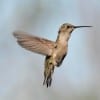 by Jim Stevenson,
by Jim Stevenson,
Science has blessed us with an enormous amount of information on the natural world, from medicine to physics, and while it is great to enjoy birding with cameras and binoculars, many of us feel a certain responsibilityto add to the body of knowledge from our observations of these feathered beauties. The journal of American Birds collects and disseminates extralimital sightings of “rare” birds for its readers, and many of these “records” are published in other media as well. Many states have listserves like our Texbirds, which acts as a clearing house for many such “records” of unusual sightings. This enables bird listers to gain knowledge of “target” birds they wish to see, but more importantly, it begins the process of identifying and documenting bird sightings of scientific interest.
I do not normally practice “bird listing” in my birding, with the exception of my life list (just passed 6000 in Australia) and my yard list (314, highest in the country). You see, it is the kind of thing that can bring pride to birders, so long as it doesn’t interfere with good field observation and reporting.
This article is simply the extra-limital birds I will be reporting from my fall sightings, and I encourage you observers to practice this same responsibility from your field work. You never know; a species you observe may lend new insights to our understanding of the species, and in so doing, further the cause of science, and better our stewardship of the species in question. And while bird listing, bird photography and other hobbies involving birds are fun and rewarding, this is a practice that gives back to birds and further enables us to be good stewards of the natural world.
Wherever you live, find out who collects bird records and issues the reports to American Birds. It is very little work, it requires only basic organization, and you may submit a record that doesn’t get accepted (it happened to me several years ago!), but you will be contributing to the knowledge of ornithology and bettering the plight of a vanishing class by increasing our understanding of their status.
The new person in the Houston/Galveston area who collects bird records for publication is John Tharp, and please allow me to issue a huge thanks to Ron Weeks for dutifully handling bird records for many years before now. Ron is an avid bird lister but has contributed mightily to the body of science by his diligence, and ability to put up with disorganized people such as myself.
Texas, and our country, has a wonderful birding community!
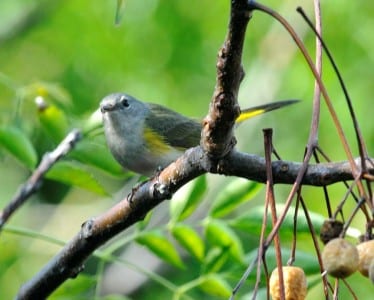
This is a female American Redstart that has taken up residence in my yard at this time. I observed her this weekend and the thought of a spring/fall migrant wintering here in Heartbreak Hammock is an exciting one! The vast majority of warblers spend the winter in the Tropics and nest much further north. This is not a great picture, but remember that with voucher photos, the ability to simply identify the species is the main priority. Records may be turned in without photos, but they would be subject to more scrutiny than one with a photo. And with digital photography, the date is stamped on the image, so there is no doubt about the facts of the record.
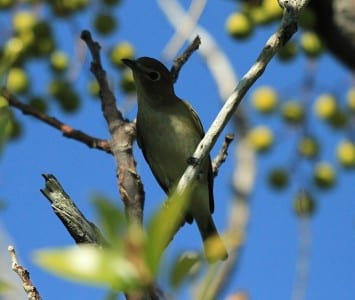
This Blue headed Vireo appeared in my yard September10th ,a very early record for this species. According to the Upper Texas Coast field card, this species is “very rare” at this time, so a voucher photo was in order. In the old days, of course, records like this were “collected” shot, but few people still practice this method. It should be pointed out, in all fairness, that “rare ” birds; those with low populations, were protected by law and not collected.
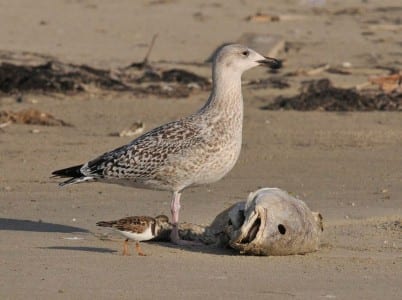
Greater Black backed Gulls are a species of the East Coast, or some would say a North Atlantic bird. Once in a great while one shows up in Texas, and they are frankly easy to pass up for an immature Herring Gull. This really isn’t a particularly typical example of its species but the huge, black bill was the giveaway. He’s enjoying an old redfish but it’s amazing to see how a plump Ruddy Turnstone is absolutely dwarfed by this massive gull.
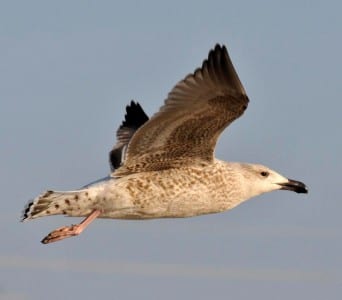
With voucher photos, it’s a good idea to get more than one aspect, maybe flying as well as standing. Many times the observer can see parts of the bird (like the flanks and under wing here) that is covered up while standing. This is a first year bird, mottled like many of the large, young gulls.
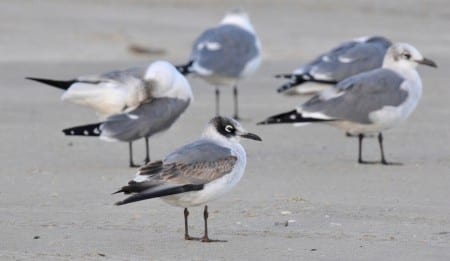
Franklin’s Gulls are regular fall migrants on the Upper Texas Coast but should be gone by this time. This bird is apparently wintering in Galveston (we’ll see!) and hanging out with Laughing Gulls. They normally winter along the Pacific Coast of South America all the way to Chile!
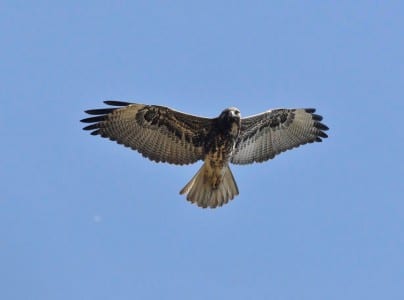
Sometimes a bird may appear which takes a little time to identify, and snapping a quick picture of it will allow you to observe it later with a field guide. I didn’t have much time on this individual that I suspected was a White-tailed Hawk on the Island. Upon further review (as they say in the NFL), it was indeed this species, one of the few I’ve had on Galveston. This isn’t as “rare” as some of the others but still is worth documenting. Note the white area on the throat.
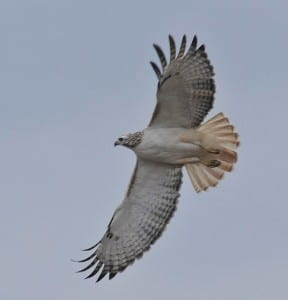
Rare birds are not confined to species. This is the first adult Krider’s Redtailed Hawk I have ever seen, period, and certainly on the Upper Texas Coast. It’s a pretty crappy picture but leaves no doubt as to its identity and age. Krider’s Hawks are very pale red-tails but may soon be split off and possibly lumped with Harlan’s Hawk into a separate species other than red- tails. Most hawk experts think so.
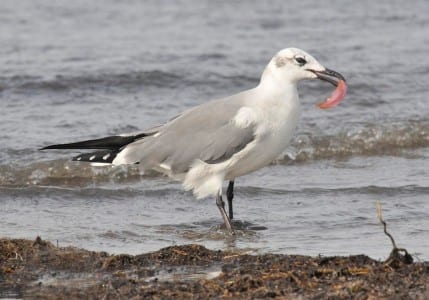
Sometimes we document more than just the occurrence of a bird. This Laughing Gull is eating a Red-bearded Cusk Eel (Lengua rosada), the first time this has been recorded. There are lots of dietary studies done on birds for master’s theses, doctoral dissertations and other research. With the help of search engines, it’s fairly easy to locate references to incidents like this one.
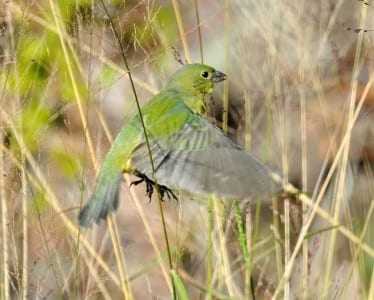
Once again, an alternative aspect is valuable, and what bird other than this species is so completely green? Note the finch bill, eliminating birds like Tennessee Warbler females. Also, the wings are tapered, indicating a fair-distance migrant, and I have seen this species well down in Costa Rica.
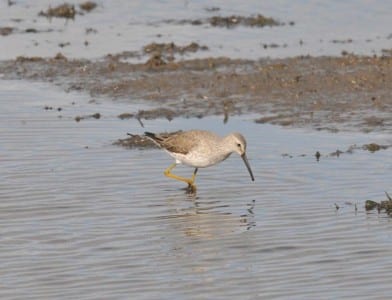
Stilt Sandpipers are rare winter residents but this one seems to be planning just that at Brazoria NWR. Most of their kind fly thousands of miles each year, back and forth from the Arctic to southern South America, and this one may not have been up to the task. Many observers would call this a Lesser Yellowlegs but note the longer, down curved bill.
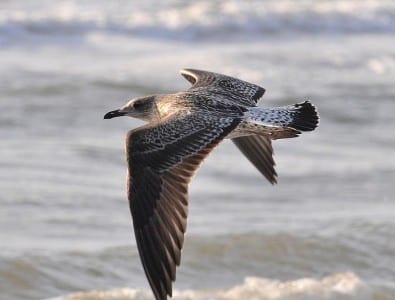
As mentioned in another article, this Vega Gull is an Asian race of the Herring Gull that may well be split into a separate species. Note the white rump, etc. It is always a good idea to organize a data base for possible splits, anticipating they may become separate species. Such is the case right now with the Willet, likely two species.
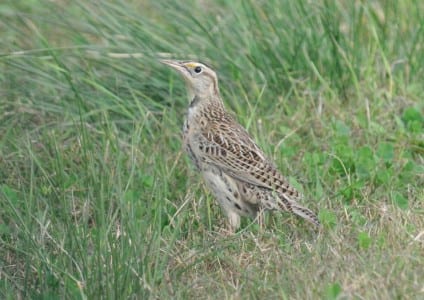
This Western Meadowlark was just about at the eastern limit of its normal range, in Brazoria County. They are quite pale and the bars on the wings and tail are not connected. Many western birds range further east in winter and I’ve even had 2-3 on Galveston Island through the years. They are much more colorful in the breeding season.
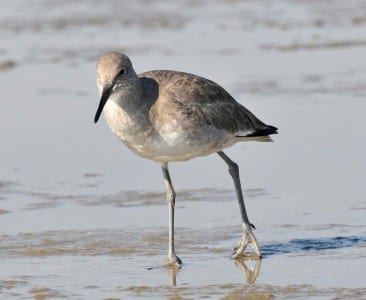
This is clearly the Western Willet, the Willet that belongs here in winter and fall. But before we decided to split the Willets into two species (not official yet) it was incumbent to ascertain the status and distribution of each new species. Of course, they breed a looooong way from each other, from the Texas Coast to the Great Salt Lake, or thereabouts. Speciation is expected with that kind of genetic separation. In the mean time it’s a good idea to find out as much as we can about their status.

This Western Meadowlark was just about at the eastern limit of its normal range, in Brazoria County. They are quite pale and the bars on the wings and tail are not connected. Many western birds range further east in winter and I’ve even had 2-3 on Galveston Island through the years. They are much more colorful in the breeding season.

This is clearly the Western Willet, the Willet that belongs here in winter and fall. But before we decided to split the Willets into two species (not official yet) it was incumbent to ascertain the status and distribution of each new species. Of course, they breed a looooong way from each other, from the Texas Coast to the Great Salt Lake, or thereabouts. Speciation is expected with that kind of genetic separation. In the mean time it’s a good idea to find out as much as we can about their status.
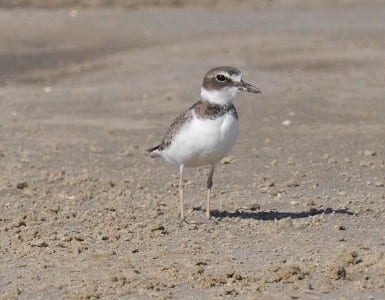
Wilson’s Plovers used to almost never winter along the Upper Gulf Coast, but as Earth has warmed over the past 25 years, more and more non-wintering species are sticking around. This species is still considered a summer resident, spring through fall, but in time we may simply call it a year¬ round resident. Things are changing really fast!
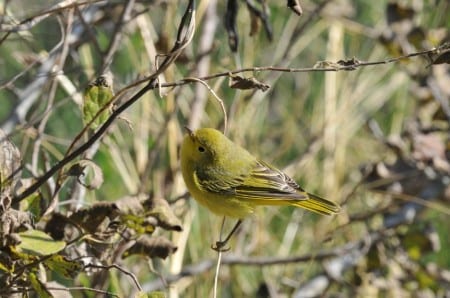
Yellow Warblers are generally rather early fall migrants, passing through from August through October. I photographed this one with Steve Mahurin at San Bernard NWR on November 24, an extremely late date. Some warblers occasionally winter in the continental US but this species does not commonly do that.
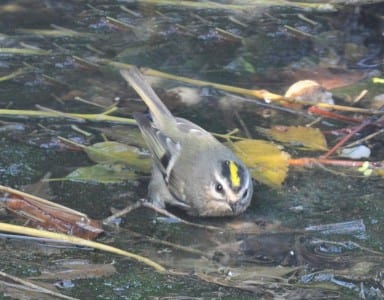
The variations from year to year in certain species are also of scientific interest. Some years we get lots of Golden ¬crowned Kinglets and other years we get none. Right now I have four that are visiting my pond every day and bathing, and I am hoping they stick around for the winter. Sometimes birds which visit in late fall, like the Red¬ breasted Nuthatches this year, leave and head back to the Mainland.
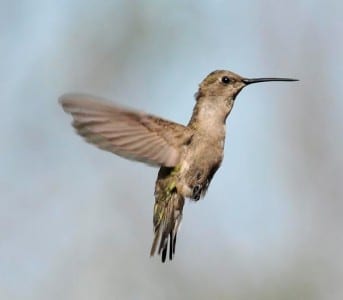
There is really only one normally-occurring hummingbird east of the Great Plains, so other species should be reported. This is a female Black-chinned Hummingbird, right out my window. This species has shown up in many states over the past few decades while we’ve been employing feeders, and presumably the trend will continue. The larger question in the minds of many is whether encouraging them to winter in the US is in their best interests.
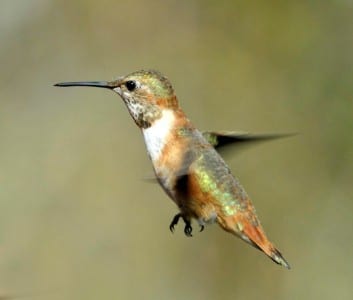
Likewise, this Rufous Hummingbird also visited me in November, a month that would actually be pretty late for the regular Ruby-throats. This species is actually about the only non ruby-throat historically seen “back East” before hummingbird feeders became popular. They often followed the Gulf Coast in late fall to parts unknown.
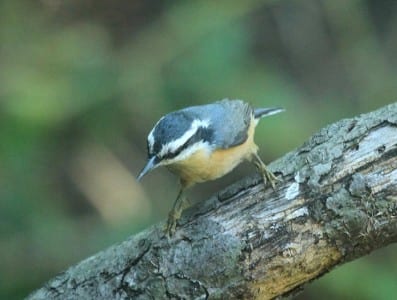
This was the first of several Red-breasted Nuthatches to visit my yard in what was an unbelievable year for this species from Texas to Florida’s Gulf Coast. Apparently their food source crashed up north and hundreds wound up on barrier islands in the South. You can tell they are a northern bird cause their call is, “yank, yank.” 😉 This is one of three Western Wood-pewees to visit my yard this fall (and give recognizable photos). It’s a species recorded very rarely east of the Great Plains, but this was their year! They are grayer than Easterns and show almost no real color. They also have a bit of a chest band. Why there were so many this year is anybody’s guess but species which are hard to identify are probably under reported ,as opposed to birds like male Vermilion Flycatchers.
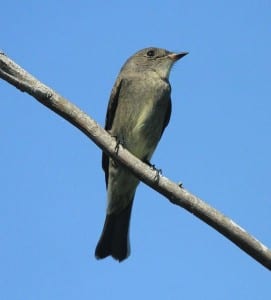
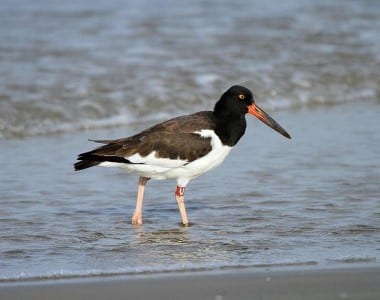
I note banded birds about once a year and you can clearly see this oystercatcher’s right leg ringed. It is crucial to researchers that they hear from field observers so they can evaluate the sightings and yield results. BTW, the dark on the bill is mud, a common sight on ‘catchers feeding near alluvial areas.
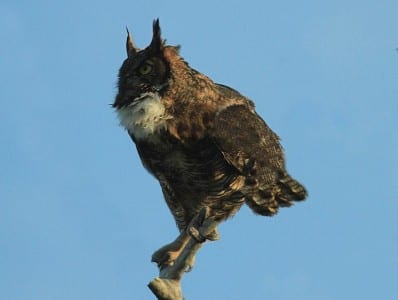
It appears that Great Horned Owls may be about to breed on Galveston, and this could be a first. That would be noteworthy and some retrievable record should be made of it. Many nights they have been singing in my yard, but seem to range east to Alice Ann’s house. Actual nesting won’t commence until January or February but they may be in the process of setting up their territory. How exciting is that!
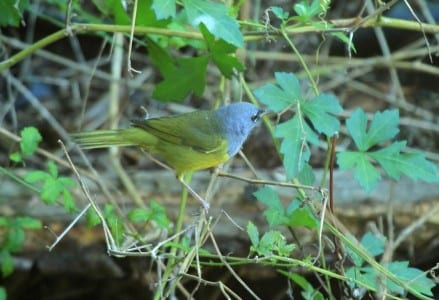
Last but not least, a Mac Gillivray’s Warbler graced my pond in late September, a western species much like the Mourning Warblers that pass through our area. This bird’s presence was preceded by an early fall western front that may have blown it and a few other western species our way. Many times in spring and fall I have been convinced of the cause and effect of this phenomenon.

 Posted in
Posted in 
























my interest zeroed in on the great horned owls being here for possible breeding- i’m happy for the new arrivals and their possibillities- but i must warn those with small pets to be alert– these owls will, and have, swooped down to snatch up small pets for feeding purposes– enjoy but be carefull–